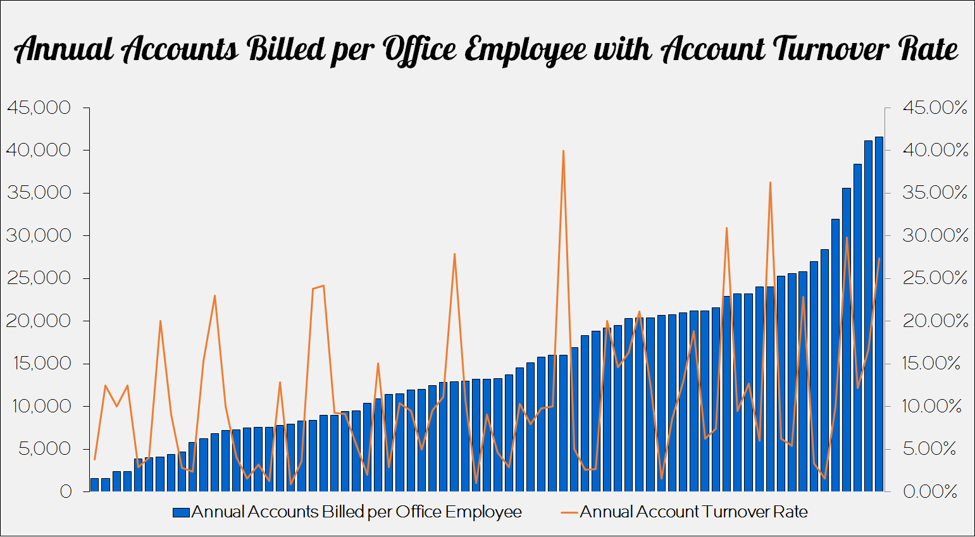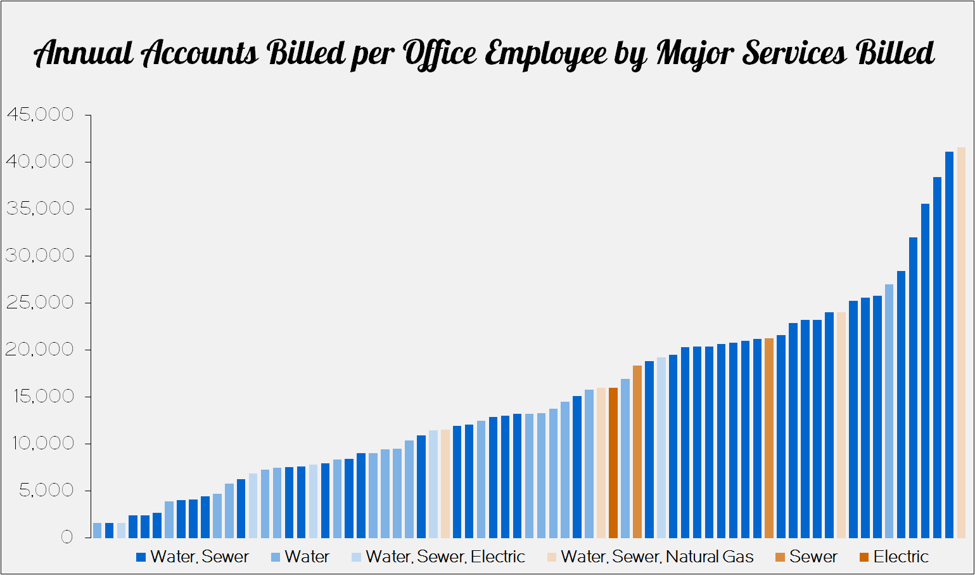For the past few months, I’ve been conducting the 2016 Utility Staffing Survey. This survey grew out of a business review I recently completed for a customer. As a part of that review, I suspected their office was understaffed and e-mailed a few questions to 30 of our largest customers. The results of that informal survey were intriguing enough to make me want to conduct a more formal survey across a larger base of utilities.
This is the first of two blog post issues publishing the results of the 2016 Utility Staffing Survey. This issue will examine staffing levels and factors outside the control of the utilities. The next issue will examine staffing levels and practices each utility can control, such as such as payment processing and bill printing.
Demographics of survey respondents
73 utilities, representing 20 states, ranging in size from 200 to 80,000 active accounts participated in the survey. See the charts below of the various demographic data:
- Size of utilities responding
- Size of utilities under 20,000 accounts responding
- Types of utilities responding
- Services provided by responding utilities
Accounts per employee
To arrive at an accurate index to compare utilities of differing sizes and billing frequencies, I came up with the number of accounts billed annually per employee. This formula multiplied the number of active accounts by the number of times each account is billed annually (12 for monthly billing, 6 for bi-monthly billing and 4 for quarterly billing) then divided that product by the total number of office employees. The higher the result, the more efficient the office should be.
The results ranged from 1,583 to 41,570 as represented by the graph below.
One disclaimer applies. At least two of the top six most efficient offices are local governments where payments are taken in a different department, so their staffing numbers do not include cashiers.

Annual customer turnover
I wondered if the turnover in customers would be a factor in how efficiently offices are staffed, so the survey asked how many applications for service (including routine move in/move outs and new construction) each utility processes per year.
One question the survey didn’t ask, which in retrospect it should have, is if the utility bills tenants or only property owners. Obviously, those utilities billing only property owners have a much lower turnover rate than utilities billing tenants.
Not surprisingly, the annual turnover rates ranged widely, from .94% to 40.00%. On the low end is a utility in a predominately rural area that only bills property owners. On the high end is a City with multiple college campuses that bills tenants.
As you can see from the graph below, there is no correlation between annual turnover rates and office efficiency.

Services billed
The final variable I examined for this issue was major services billed (water, sewer, electric and natural gas) looking for a correlation between the number of services billed and office staffing. I only considered the major services, because other services, such as garbage, storm water, or area lights, generally are billed as flat-rate services and are not nearly as labor intensive to bill. Even though sewer is not generally a metered service, I considered it to be a major service because some of the responding utilities bill only for sewer.
I anticipated utilities billing multiple metered services would require more staff than those billing for only a single metered service. This proved to be the case, as 23 of the 25 most efficient offices bill for only one metered service, as shown below. The one anomaly was the most efficient office, which happens to be one of the utilities mentioned above that doesn’t collect payments.

Next issue
The next issue will analyze staffing levels and labor-saving practices each utility can control, such as automation and outsourcing.


